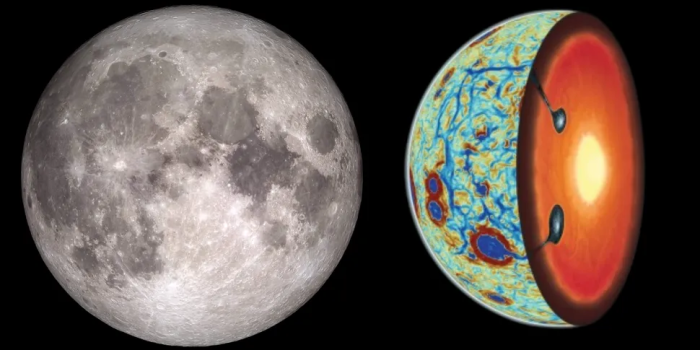The moon, a quiet historian of Earth’s past, is home to mysteries that span more than 4.2 billion years. Our celestial neighbor’s chaotic origin and history have been clarified by recent research conducted by experts at the University of Arizona’s Lunar and Planetary Laboratory, providing insights into its mysterious past.
The moon formed from molten material blasted during a cataclysmic collision between Earth and a celestial body, which is thought to have happened around 4.5 billion years ago. On the other hand, the moon’s subsequent evolution has been compared to a “choose-your-own-adventure novel” with many possible trajectories.

A fascinating idea put out by a team at the University of Arizona states that the moon experienced a radical transformation, essentially turning itself “inside out.” Apollo mission rock samples suggest a period of tremendous lunar upheaval that may have reshaped the moon’s interior structure.
Scientists have been intrigued by the moon’s composition anomalies, especially the concentration of volcanic rocks rich in titanium on the lunar nearside. The research team suggests a fast development scenario in which the moon was entirely covered by a hot lava ocean that solidified to create its crust and mantle. Thick elements like ilmenite solidified inside this molten ocean, causing gravitational instabilities that caused thick layers to sink into the moon’s core.

The team’s findings, supported by data collected by NASA’s GRAIL mission, imply that the moon’s gravitational field is influenced by the remains of these thick layers under its surface. Researchers were able to determine the location of ilmenite deposits by examining gravity anomalies, which provided insight into the moon’s intricate interior structure.
In addition, the order of events of these geological occurrences offers insights into the moon’s volcanic past and the creation of unique features such as the Oceanus Procellarum area. The discoveries provide a better knowledge of the development of our cosmic neighbor and open the door for future lunar research.


